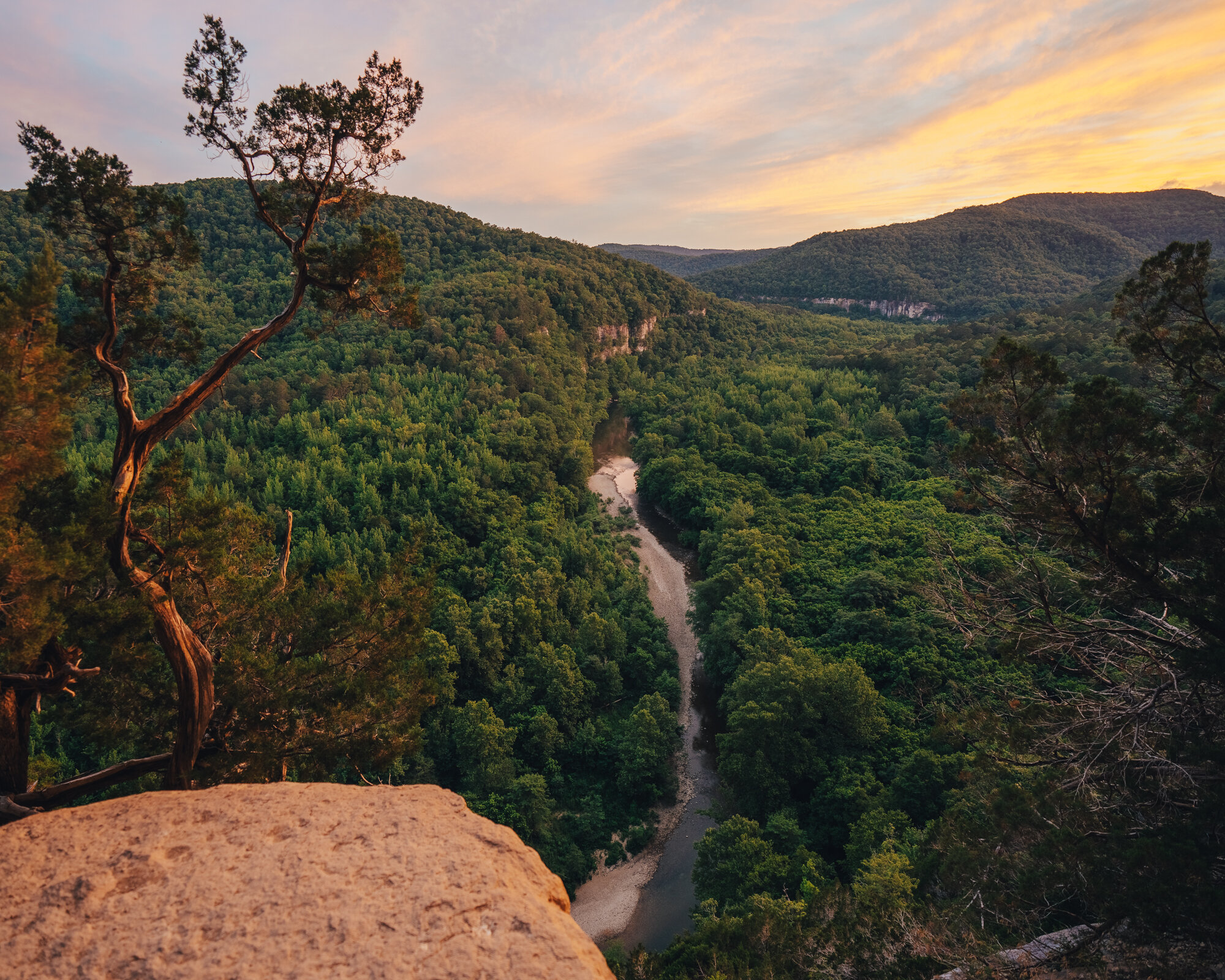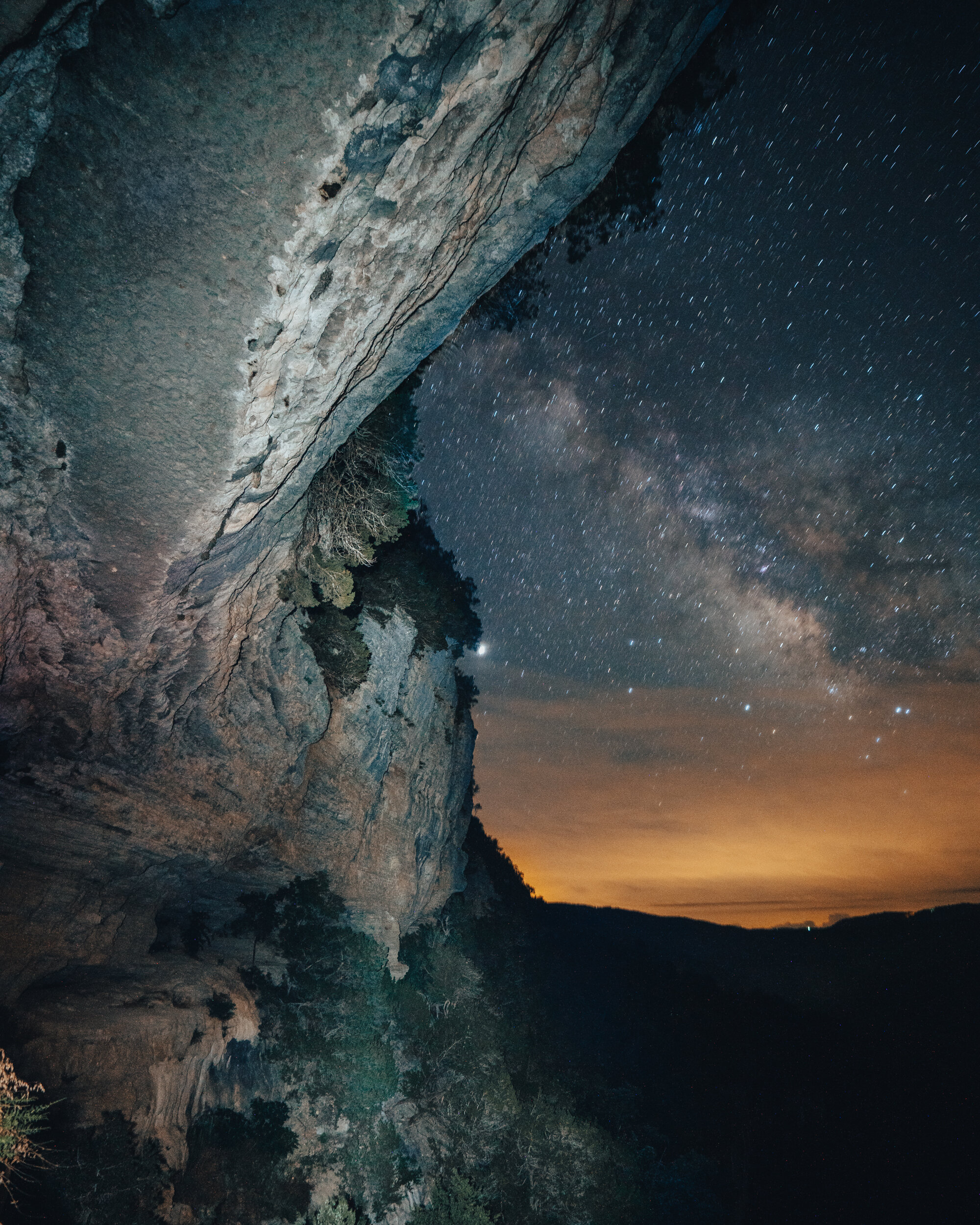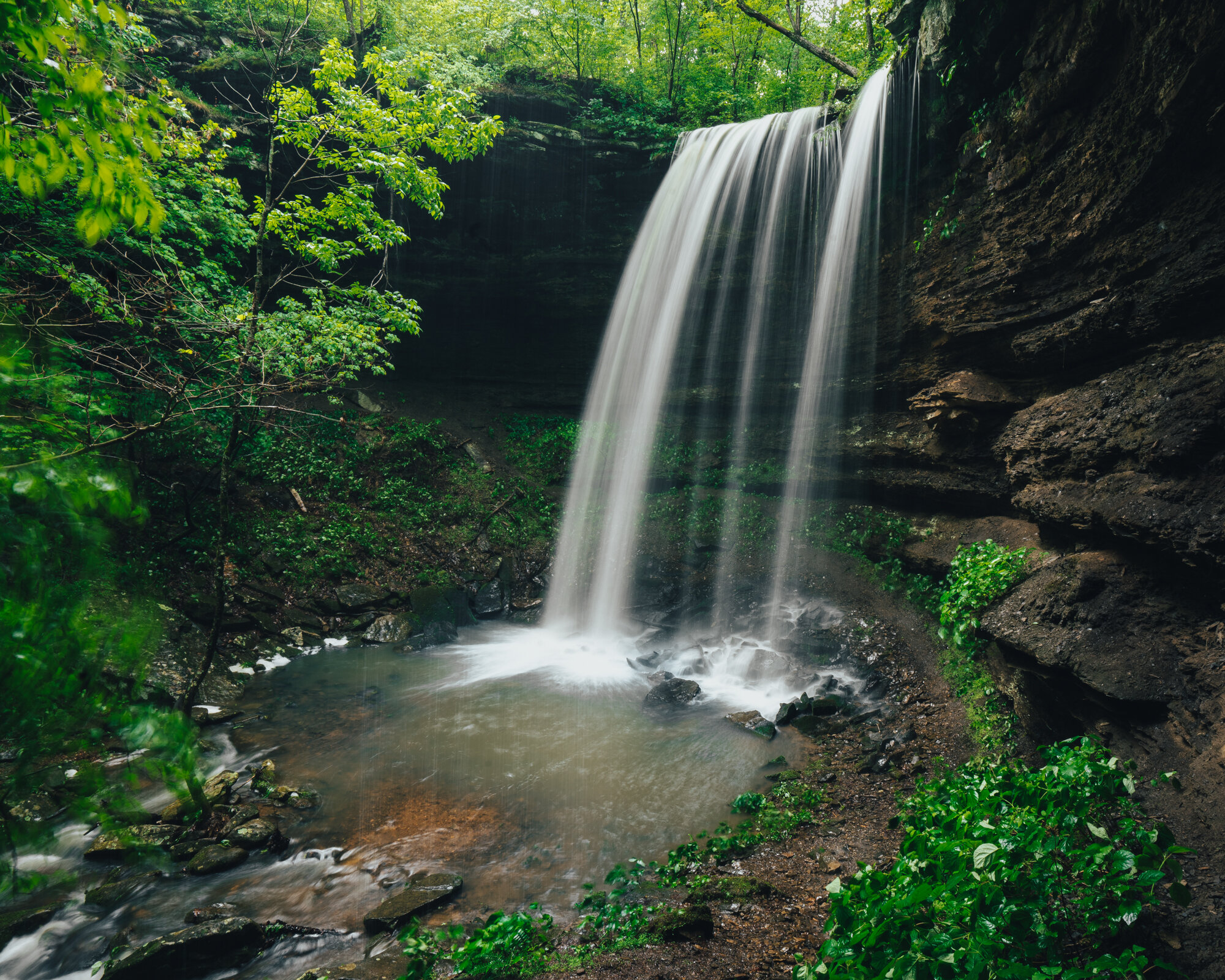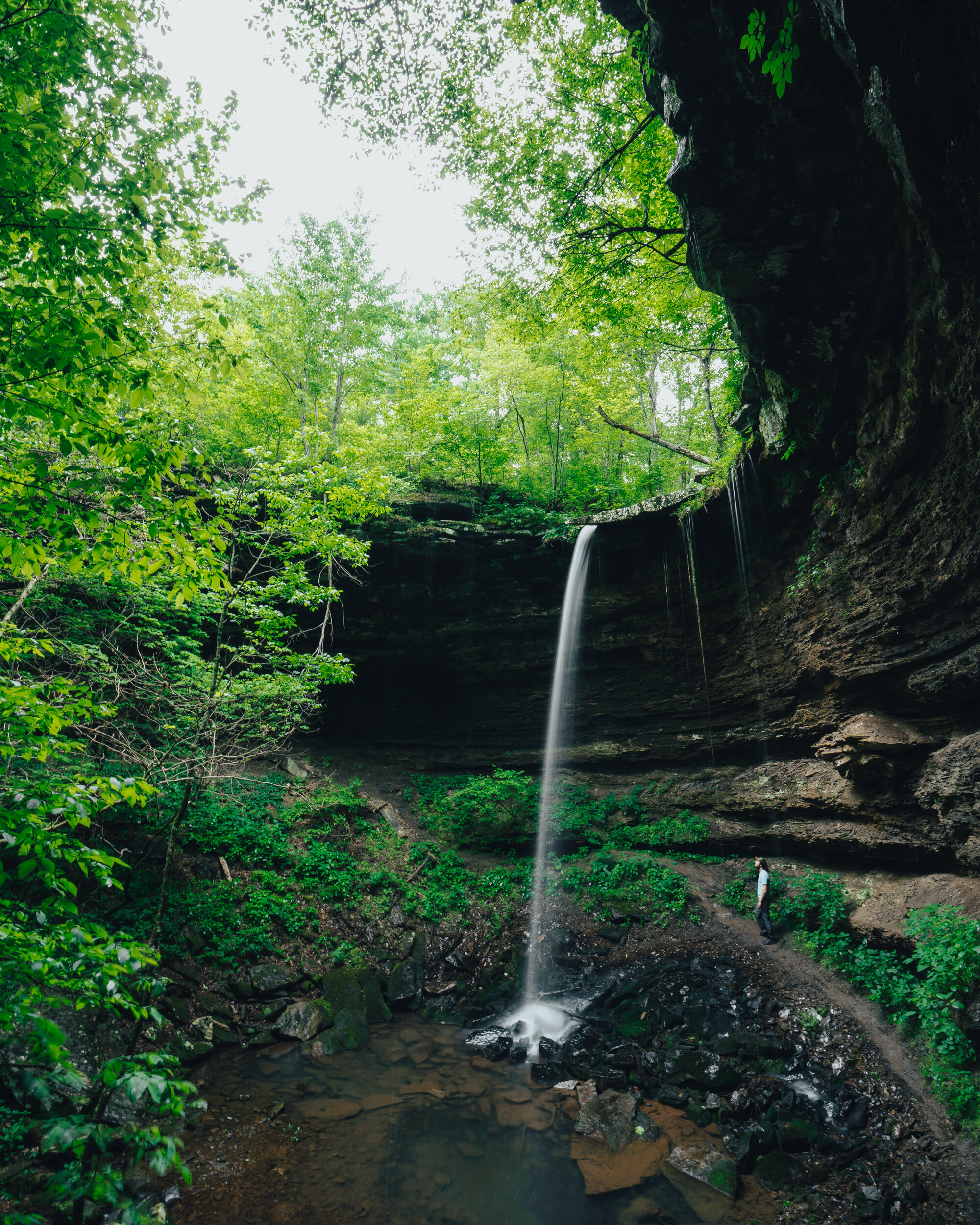Lost Valley & Eden Falls
Buffalo National River, Arkansas
THE BASICS
Lost Valley Trail
Difficulty: Easy • Length: 2.3 Miles • Roundtrip Elevation: 252 ft
PLEASE PRACTICE THE SEVEN PRINCIPLES OF LEAVE NO TRACE: PLAN AHEAD, STAY ON THE TRAIL, PACK OUT WHAT YOU BRING TO THE HIKING TRAIL, PROPERLY DISPOSE OF WASTE, LEAVE AREAS AS YOU FOUND THEM, MINIMIZE CAMPFIRE IMPACTS, BE CONSIDERATE OF OTHER HIKERS, AND DO NOT APPROACH OR FEED WILDLIFE.
The Lost Valley Trail is one of the most popular hiking trails in Arkansas. It located within the boundaries of Buffalo National River near Ponca, and features the iconic Eden Falls.
Getting to THE LOST VALLEY Trail
To visit Lost Valley, head south on Highway 43 from Ponca, Arkansas. You'll find the turnoff for the area clearly marked, about one mile south of the intersection of Highway 43 and Highway 74. If you're traveling from Ponca or Jasper, look for the right-hand turn onto the road leading to Lost Valley. This short gravel road will take you straight to a large well-maintained parking area.
Parking GPS: 36.008924, -93.371684
Boxley Valley Elk in the Lost Valley trailhead parking area, Buffalo National River Arkansas.
Trailhead and sign for the Lost Valley Trail, Buffalo National River, Arkansas
Hiker on a forested section of the Lost Valley Trail, Buffalo National River, Arkansas
The Natural Bridge: About half a mile into the hike, you'll encounter the true entrance into Lost Valley, the natural bridge carved from rock by years of erosion. This feature sets the tone for the rest of the hike, showcasing the karst beauty of the Ozarks.
Natural Bridge Falls at Lost Valley, Buffalo National River, Arkansas
Cob Cave: Further along the trail, you'll come across Cob Cave, a massive rock shelter that offers a glimpse into the region's history. The cave's overhang provides a cool, shady spot to rest and marvel at the sheer size of this natural formation.
Hiker in Cobb Cave along the Lost Valley Trail, Buffalo National River Area, Arkansas
Eden Falls: The crown jewel of the Lost Valley Trail is Eden Falls, a 53-foot waterfall cascading down a cliff face into a serene pool. Depending on the season, the waterfall may range from a gentle trickle to a roaring torrent, but it's always a breathtaking sight. The viewing area at the base of the falls is a perfect spot for photos and quiet reflection.
Eden Falls along the Lost Valley Trail, Buffalo National River, Arkansas
Eden Falls Cave: For the adventurous, the trail extends a bit further to Eden Falls Cave. You can explore the cave's entrance and, with a flashlight, venture deeper to find a hidden underground waterfall. Be cautious, as the cave floor can be slippery and uneven.
Hiker under Eden Falls Cave Falls along the Lost Valley Trail, Buffalo National River Area, Arkansas
View more of my images from Lost Valley here.

























































